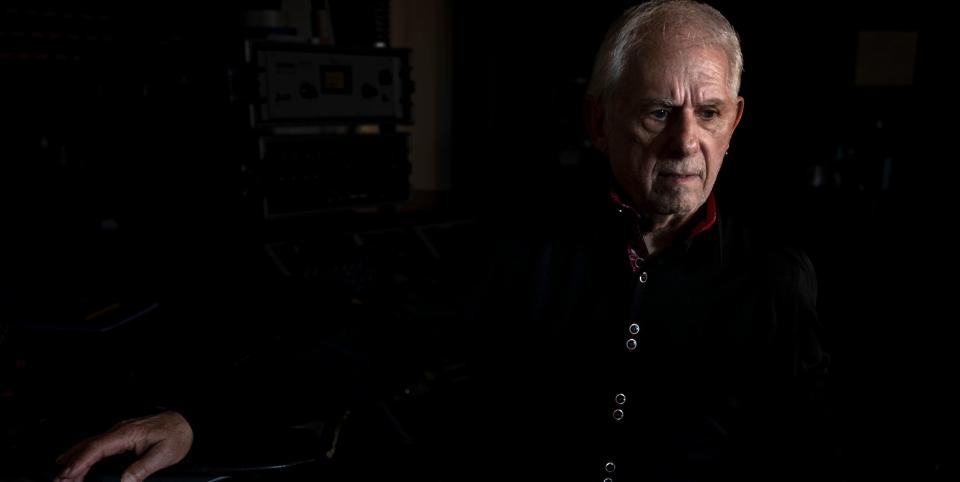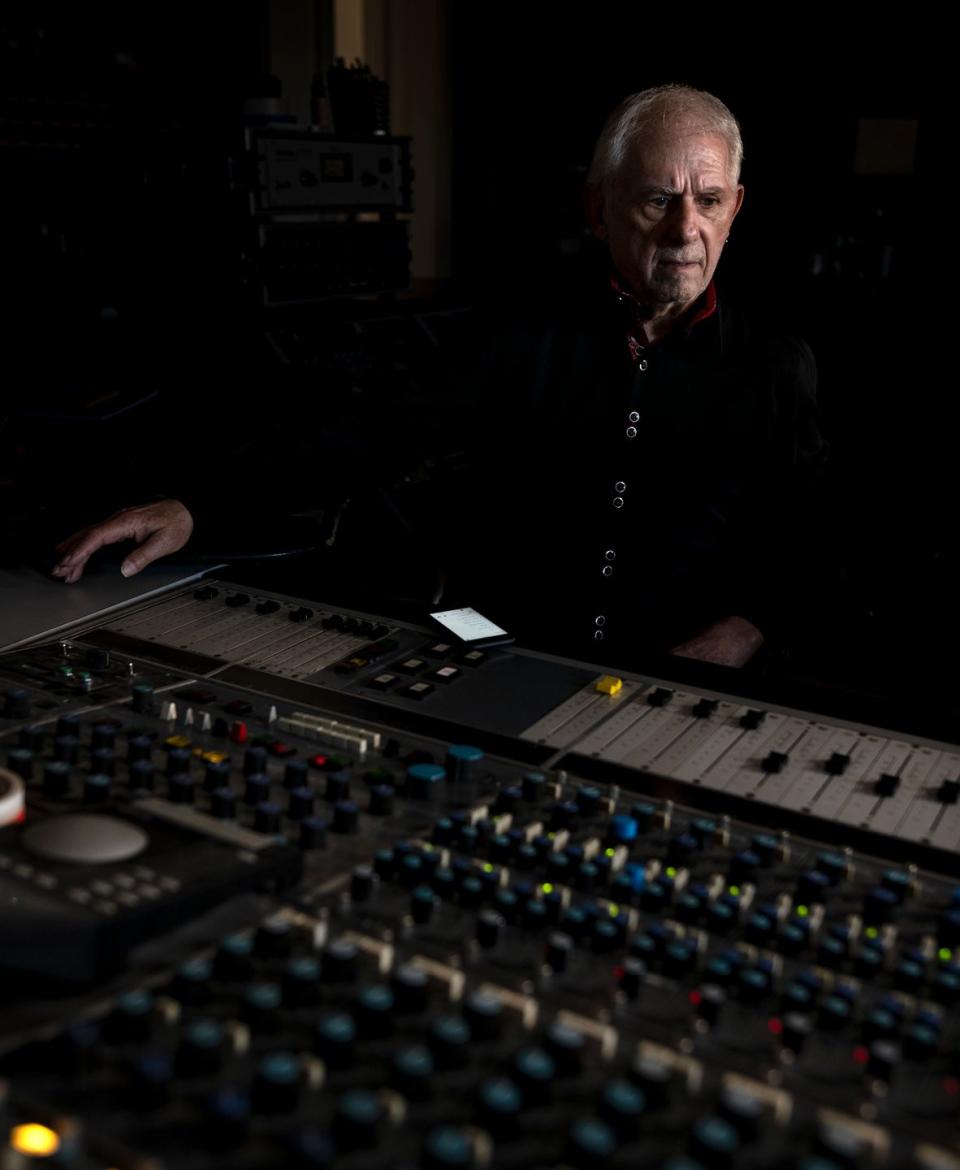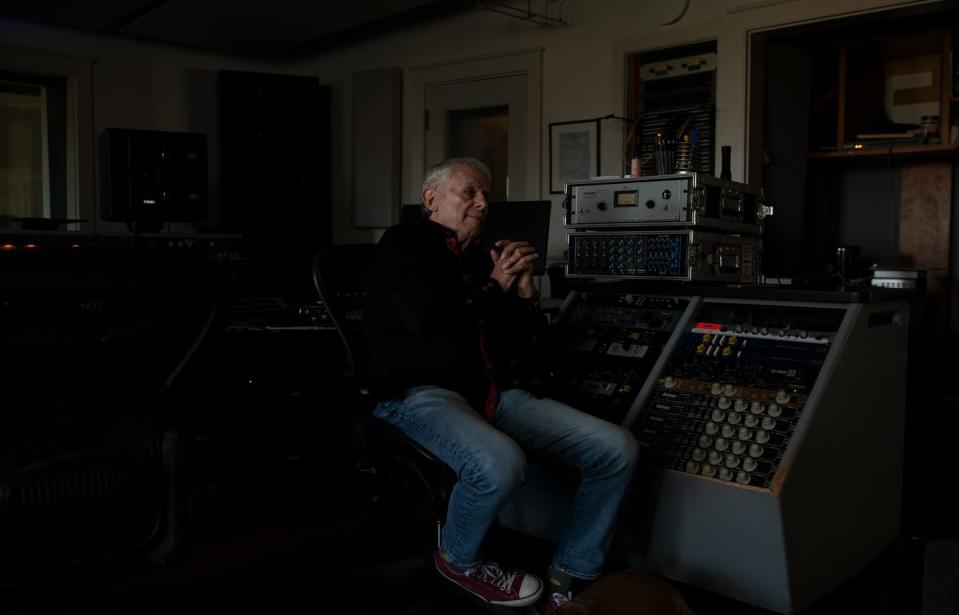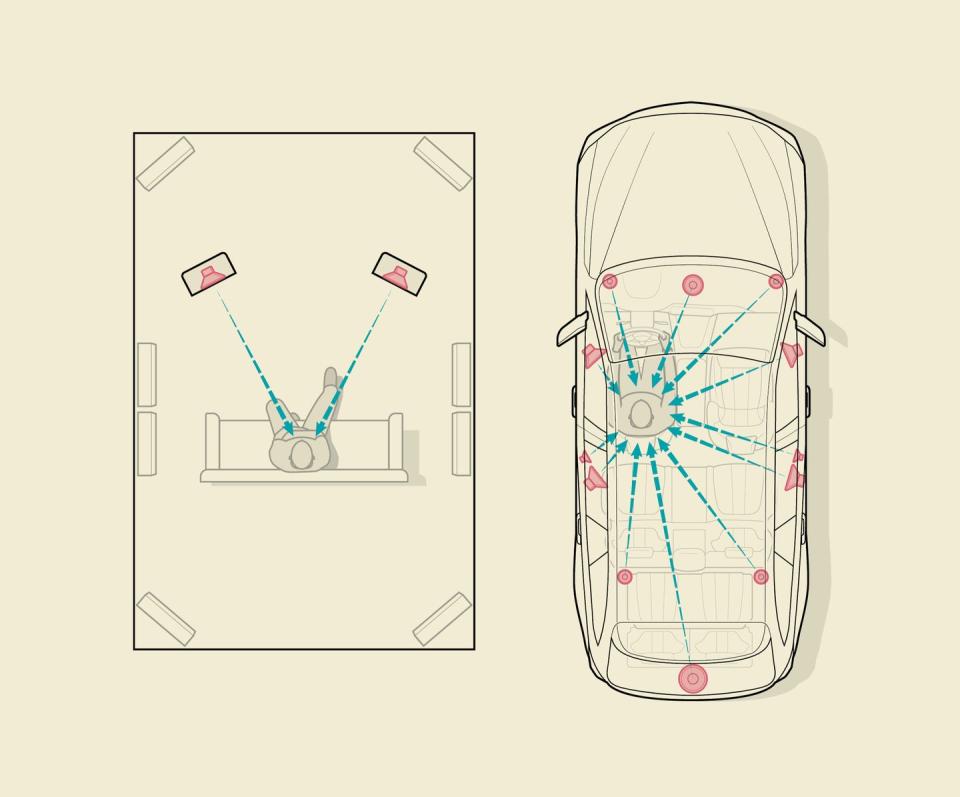Veteran Music Producer Elliot Scheiner’s Quest to Bring Hi-Fi to Your Headrests


I’m at Clubhouse, a time capsule of a studio in New York’s Hudson Valley where artists from the National and the Lumineers to Linda Ronstadt have recorded music. My vintage-rock brain is duly blown: In one corner sits the Fender Rhodes electric piano that accompanied Elvis Presley’s original Vegas run, “LV Hilton” stenciled on its surface. In another, a 1902 concert upright left here by songwriter Ben Folds.
This story originally appeared in Volume 15 of Road & Track.
It gets better. Fronting a prized 28-channel Neve console—the solid-state recording desk that defined Seventies rock, with a late encore for Nirvana’s Nevermind—is Elliot Scheiner, the eight-time Grammy-winning producer, mixer, and engineer.
Perennially dissatisfied by the tin-can state of car audio, Scheiner lobbied initially skeptical automakers to raise their game. Scheiner tuned the industry’s first factory DVD-Audio 5.1 surround-sound system, the Panasonic ELS unit in the 2004 Acura TL, equipped with a now-quaint eight speakers and 225 watts.
Scheiner, 75, has driven up from Connecticut this morning in his Aughts-era Ford Thunderbird as he prepares to record an album with jazz singer Madeleine Peyroux. An Acura MDX Type S Advance is parked outside, its 1000-watt, 25-speaker, 22-channel ELS Studio 3D Signature Edition system the latest beneficiary of Scheiner’s golden ear.
It’s an ear that leaned close to tweak Van Morrison’s guitar sound on “Moondance.” In fact, Scheiner has guided music from Fleetwood Mac, Aerosmith, the Eagles, Queen, Sting, Foo Fighters, and Beck. He helped birth notoriously meticulous Steely Dan albums—some requiring more than a year of Kubrickian takes with a revolving army of session musicians—which became the benchmark for a generation of studio engineers.

So when Scheiner bids me into his sweet spot at the Clubhouse desk to hear music as God, Bach, or the Beatles intended, he becomes an ideal guide for today’s musical quest: how to re-create studio magic in your car as faithfully as possible. That’s been Scheiner’s personal earworm since the Eighties, including at Los Angeles’s fabled A&M Studios.
“When we finished a mix, they could broadcast it from one room to a ’57 Bel Air convertible,” Scheiner recalls. “And you’d go in the car and just listen, basically to hear how bad it was. In all the cars, it just never sounded good enough.”
Roll tape to 2005, when the Acura system tuned by Scheiner was more than good enough. After Scheiner engineered the Foo Fighters’ In Your Honor, Dave Grohl and his bandmates heard and approved a final 5.1 mix not in the studio but inside the car. Finally, Scheiner and the artists whose vision he serves—plus the cars’ owners who were singing along—could listen on systems that hit the right notes.
A Brief History of Rhyme
Whistlin’ Dixie aside, the first music heard in cars emanated from crudely repurposed home radios. In 1930, Paul Galvin stuffed a prototype AM radio into his Studebaker in time for a broadcasters’ convention, branded it “Motorola,” and became a millionaire. Blaupunkt brought the first FM car radio in 1952. CBS Laboratories’ and Chrysler’s Highway Hi-Fi records skipped into oblivion in 1959, despite clever tech that packed 45 minutes of music onto a seven-inch record. Eight-tracks, cassettes, and CDs have all given way to apps, streaming, and satellite radio, bringing variety at the price of (mostly) compressed audio files with sound quality worse than that of a CD.
Yet we’re now arguably entering a golden age of car audio, driven by new tech and familiar luxury one-upmanship. Names once familiar only to audiophiles—Bang & Olufsen, Bowers & Wilkins, Burmester, Meridian, Naim, Mark Levinson, Lexicon, Infinity—are proliferating on our roads. Akin to a horsepower race, luxury cars can now pack more than 1000 watts and two dozen speakers, with nearly a separate amplifier channel for each.
Yet familiar challenges remain. From cramped quarters to hard and asymmetrical surfaces, car cabins are a sonic minefield. Occupants are jammed up against doors rather than seated at the idyllic center of the speakers’ soundstage.

“Vehicles were always considered one of the worst audio environments,” says Rishi Daftuar, who leads system design for Lexus’s Mark Levinson systems as Harman International’s senior principal acoustic systems engineer. That’s been changing, Daftuar says, with top audio systems delivering sweeter playback than your average home setup. How many people have a dozen speakers in their living room, with equipment modeled, tuned, and optimized for their space and fixed listener positions? It’s rather unlike most of us, who haphazardly prop a Bluetooth speaker behind a potted plant in our living room.
Audio systems must boost certain bass frequencies by about 10 dB to counteract road and engine noise. But they can also use cabin gain—the phenomenon wherein smaller spaces cause bass pressure to build quicker than larger spaces do—to amplify bass passively, for the chesty thump you usually experience only at concerts. Critical time delays ensure music from multiple speakers arrives at ears exactly when it’s supposed to.
In Harman surveys, people cite their car as their most enjoyable and frequent listening environment. A Seventies teenager fishing under the seat for an Exile on Main Street tape might have said the same, but if that teenager heard the Stones’ “Loving Cup” pour from the speakers of a modern luxury SUV, he’d start measuring space or a water bed.
“There’s an emotional connection between driving and listening to music that transcends generations,” says Jonathan Pierce, director of global experiential R&D at Harman Automotive.
As for today’s digital tracks, which often stream from apps like Spotify or Pandora in mediocre quality—what Pierce calls “the bane of my existence”—many experts predict that the audio-quality problem will solve itself in our new big-bandwidth age. From Tidal’s high-fidelity streaming to Spotify Premium at 320-kbps quality, Pierce sees lossless or CD-quality music as an inevitable advance for in-car listening.
Senses Working Overtime
It’s not all about the ears. The visual design of speakers was once largely automakers’ domain, but audio companies are developing signature looks too. Automakers let audio partners advertise their brand names on shiny speaker grills.

 Yahoo Autos
Yahoo Autos 